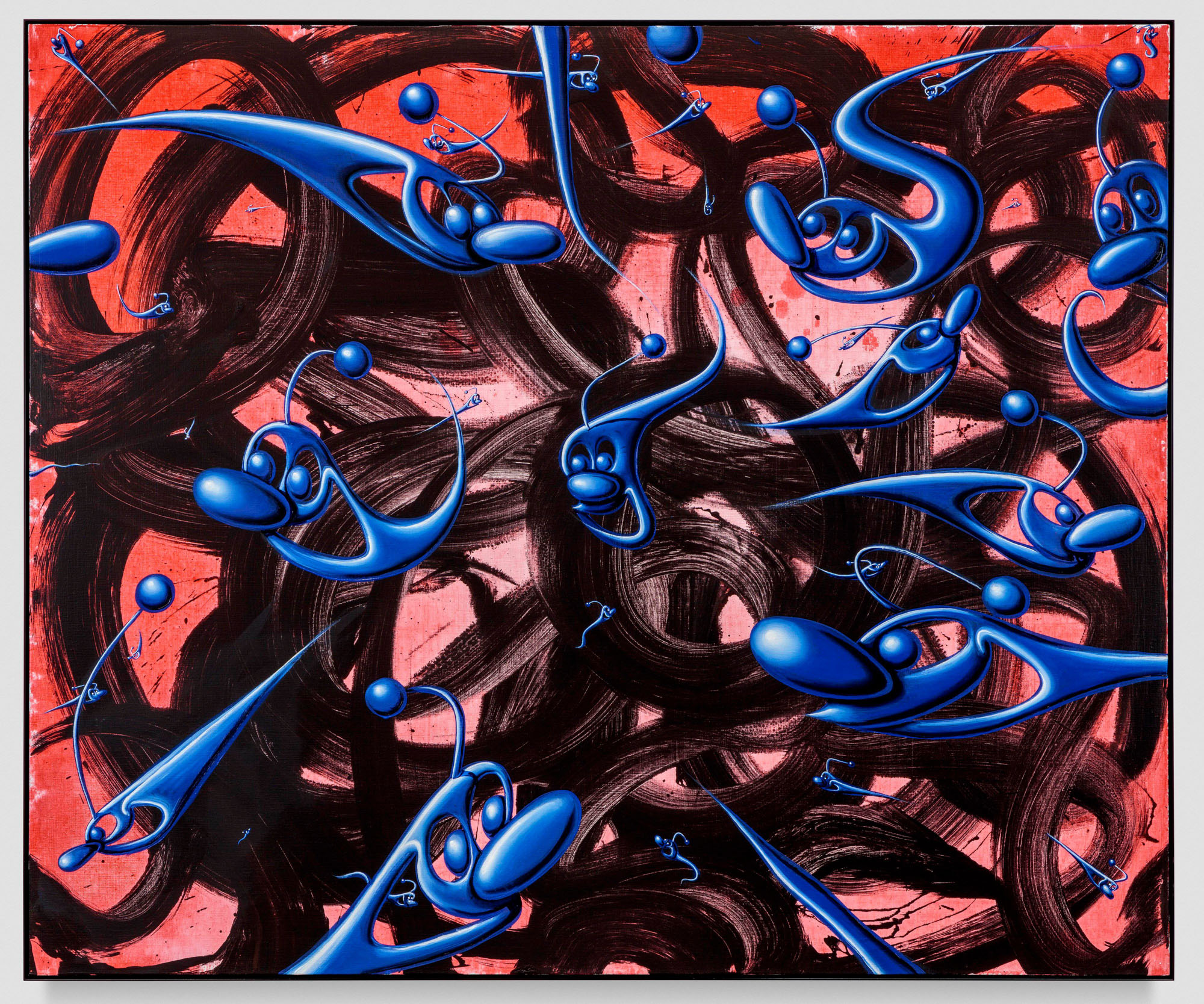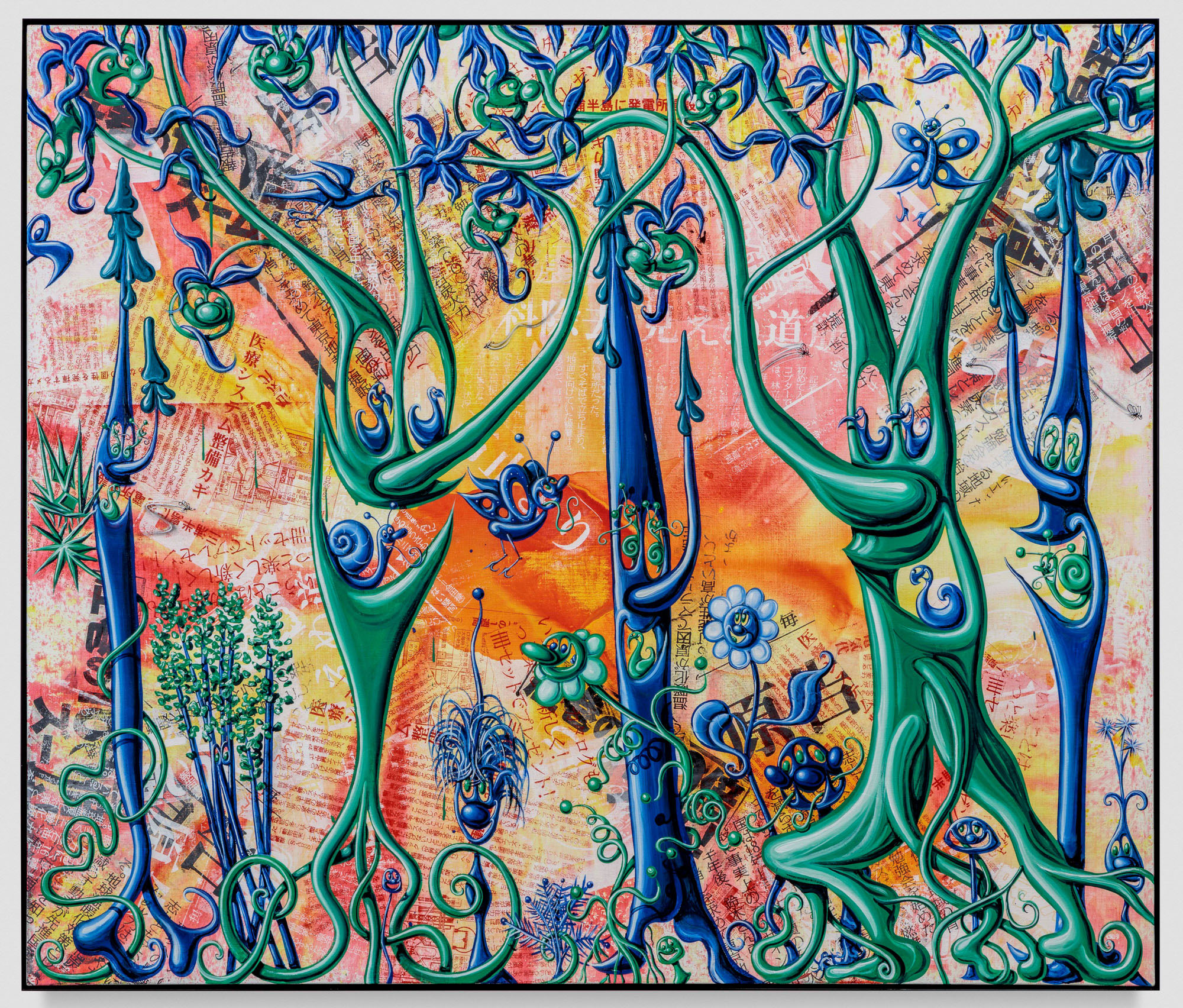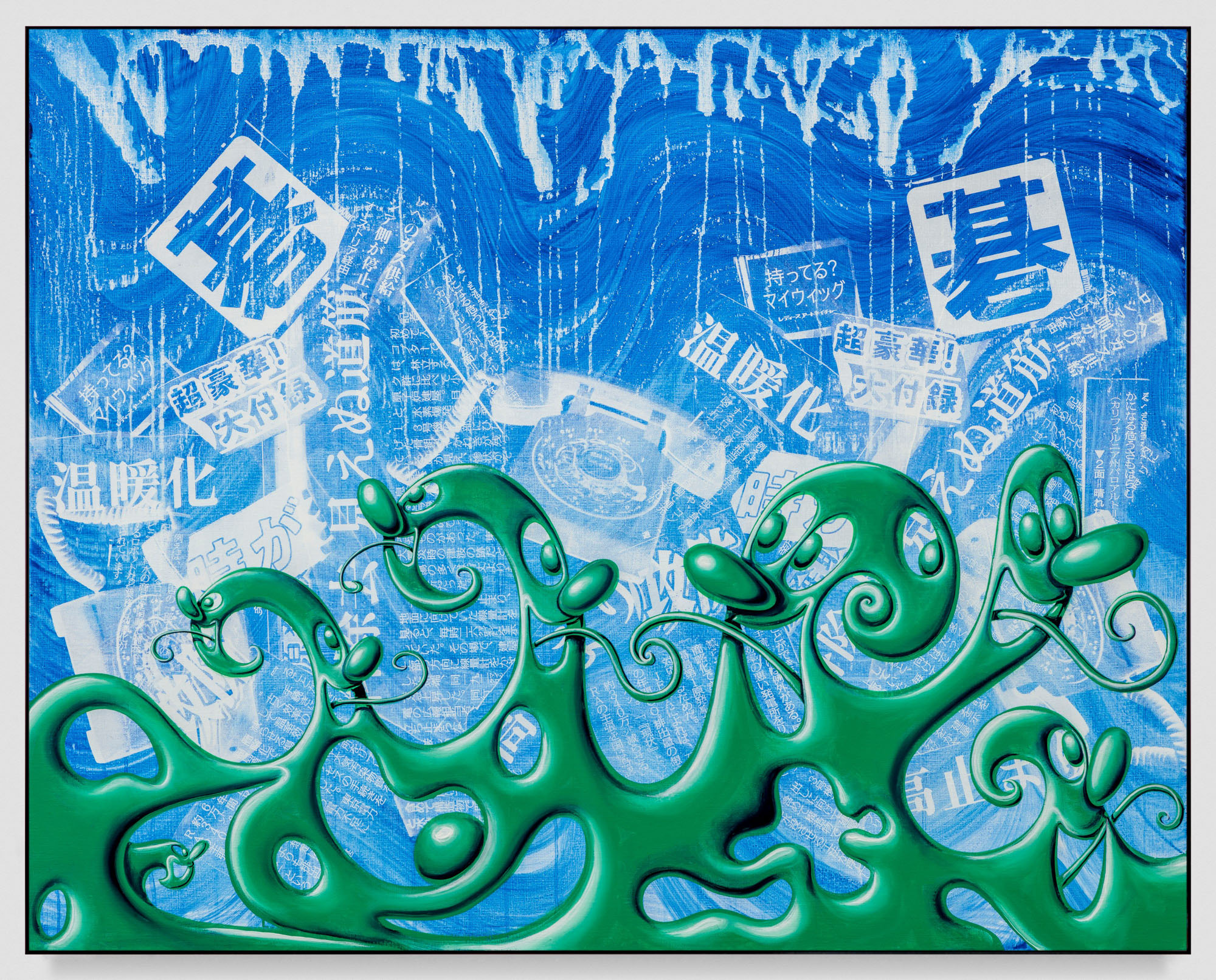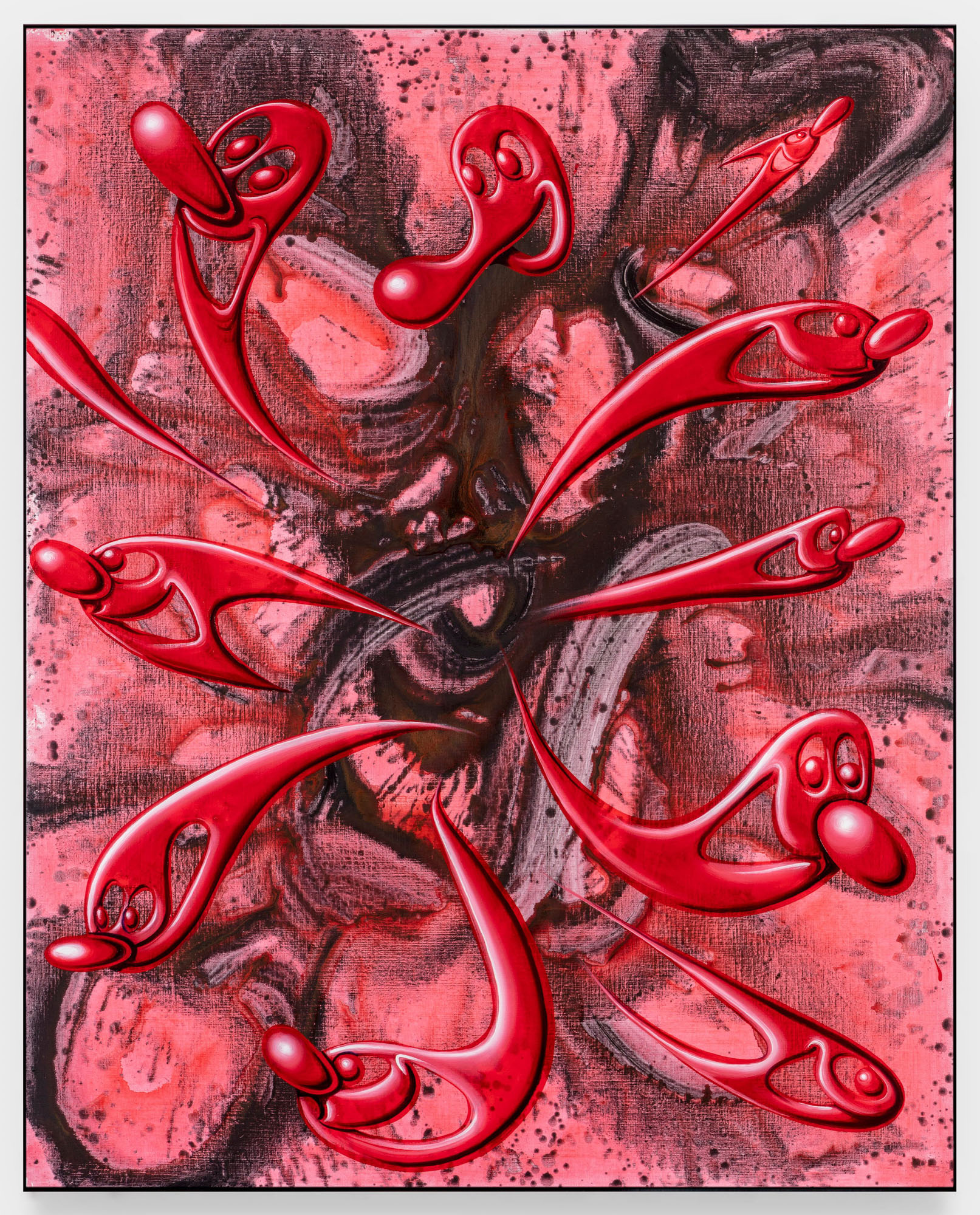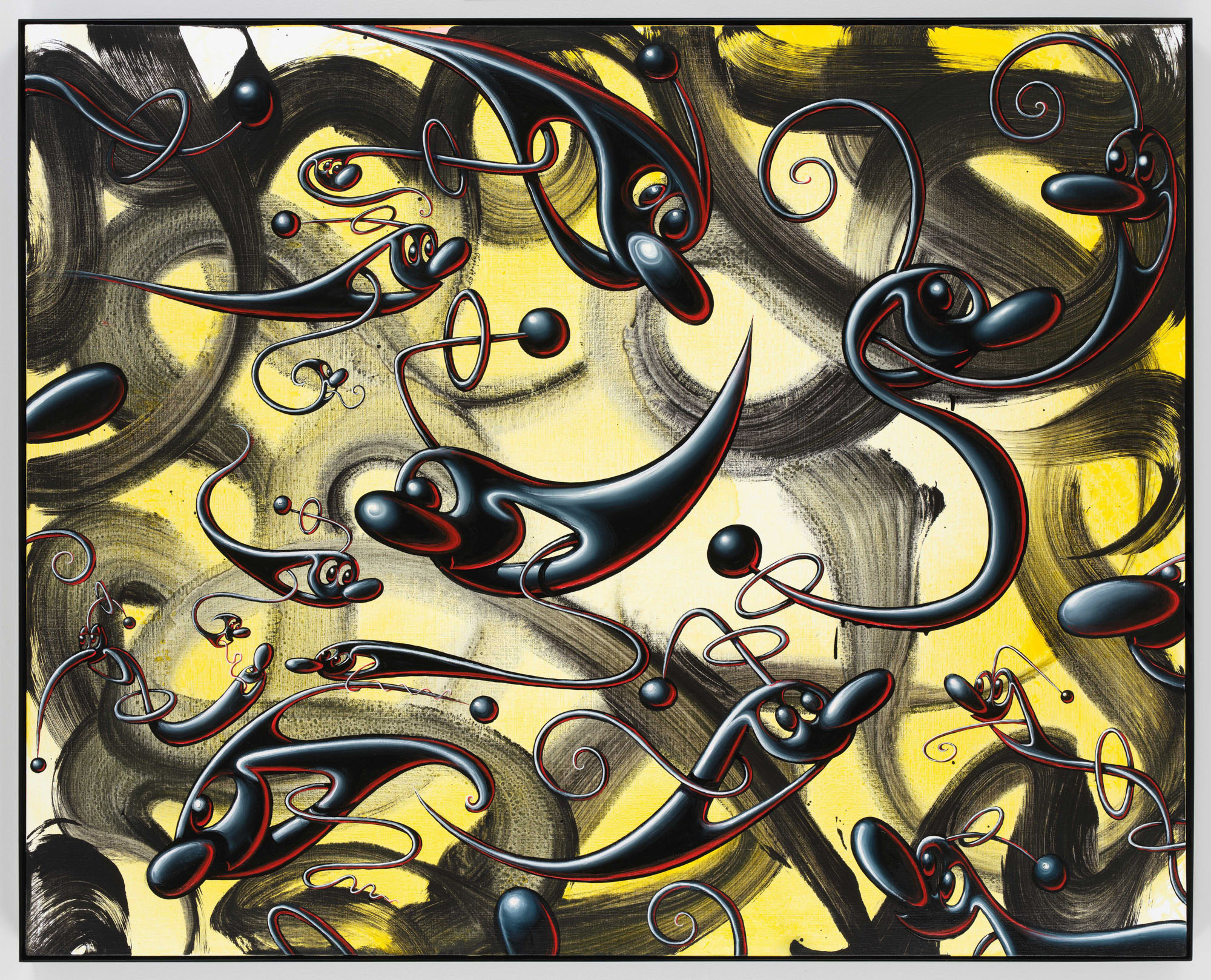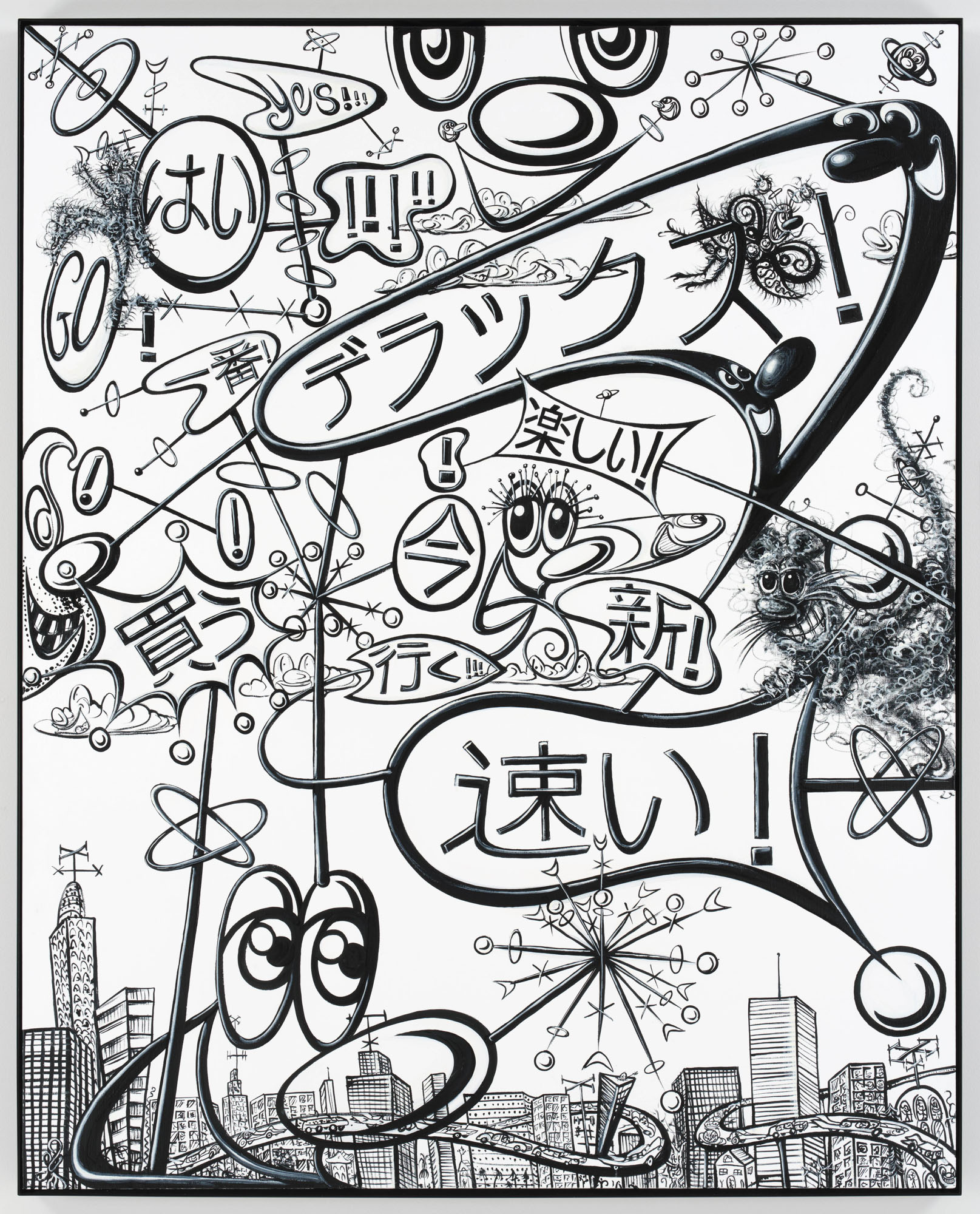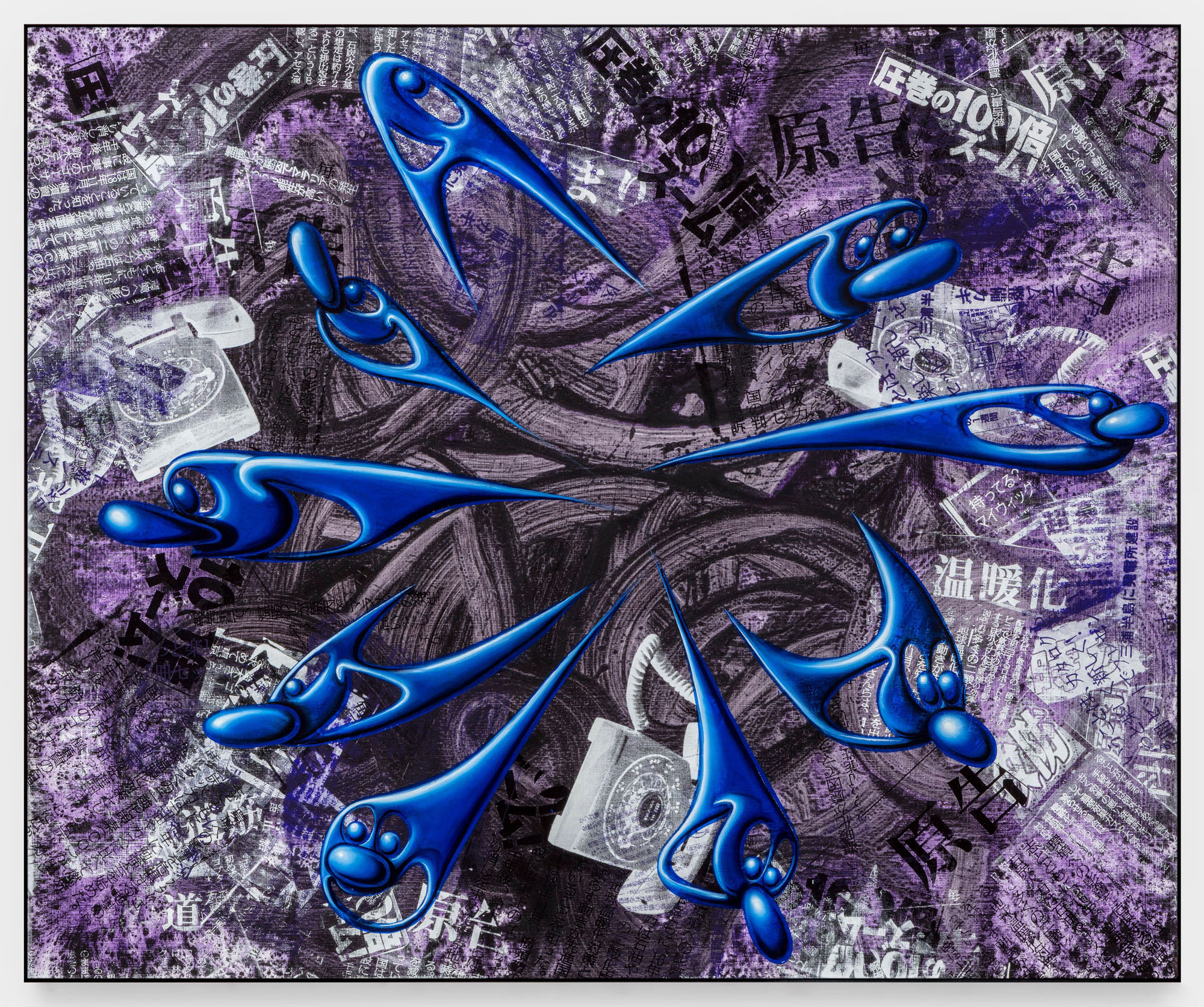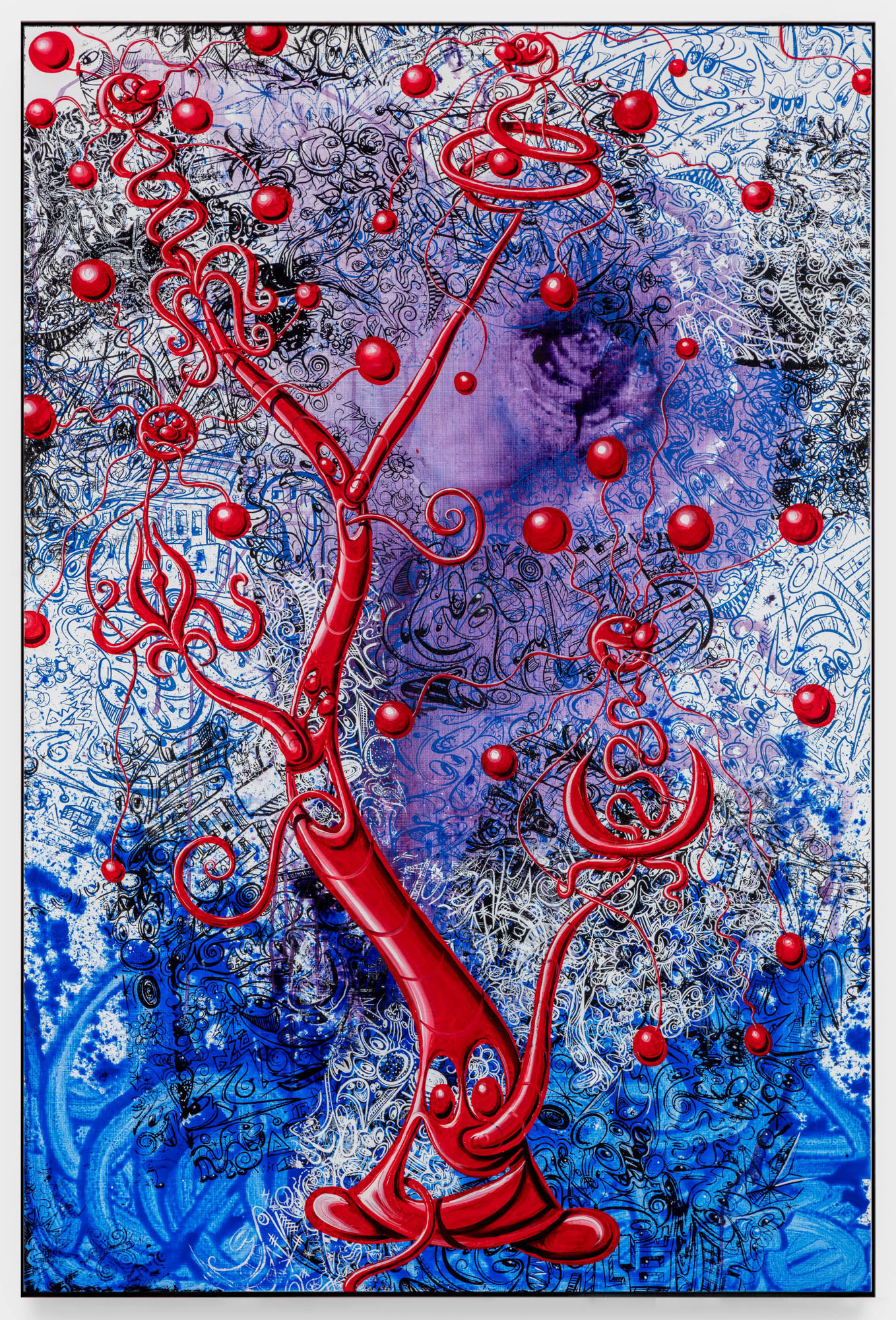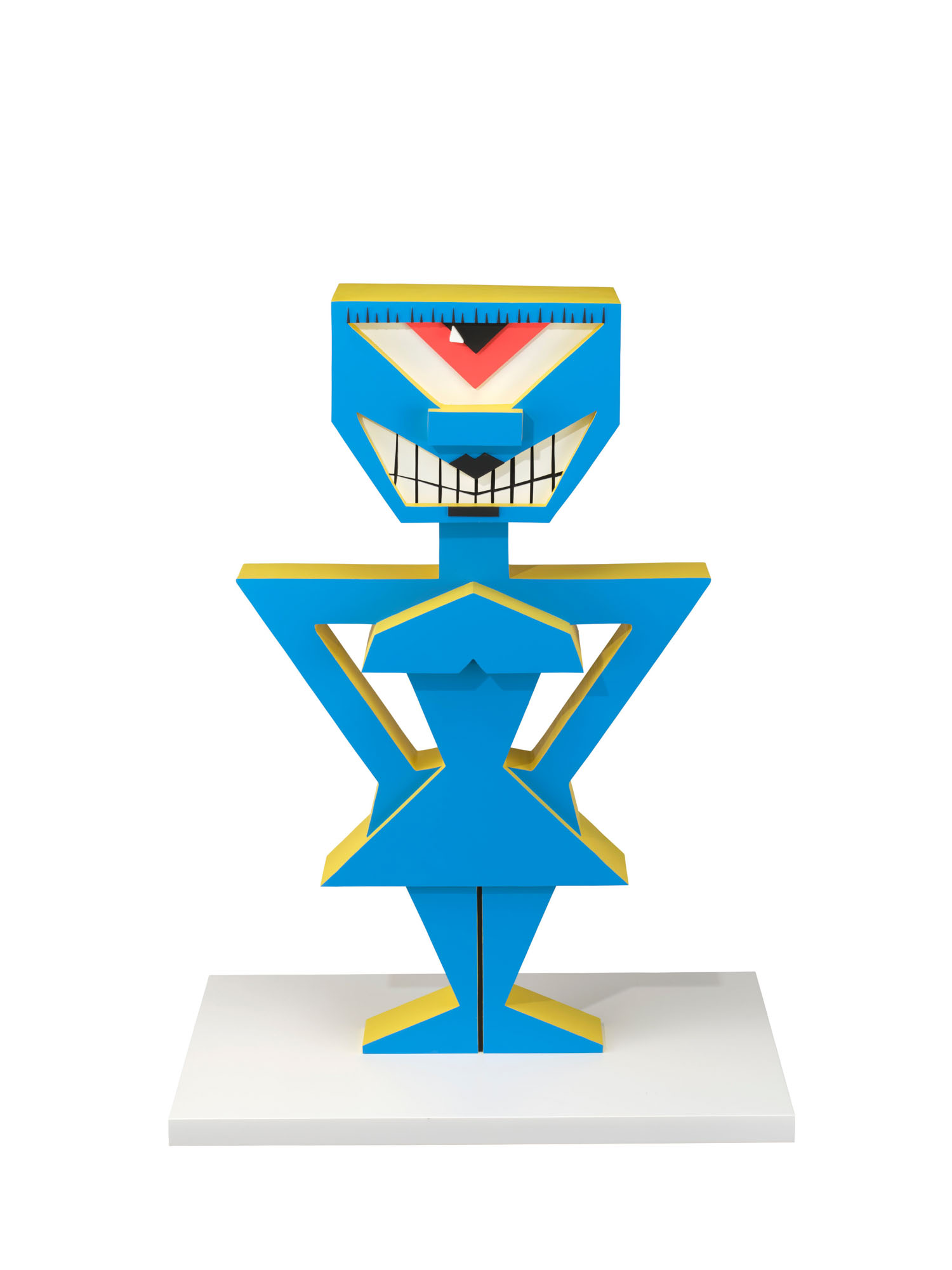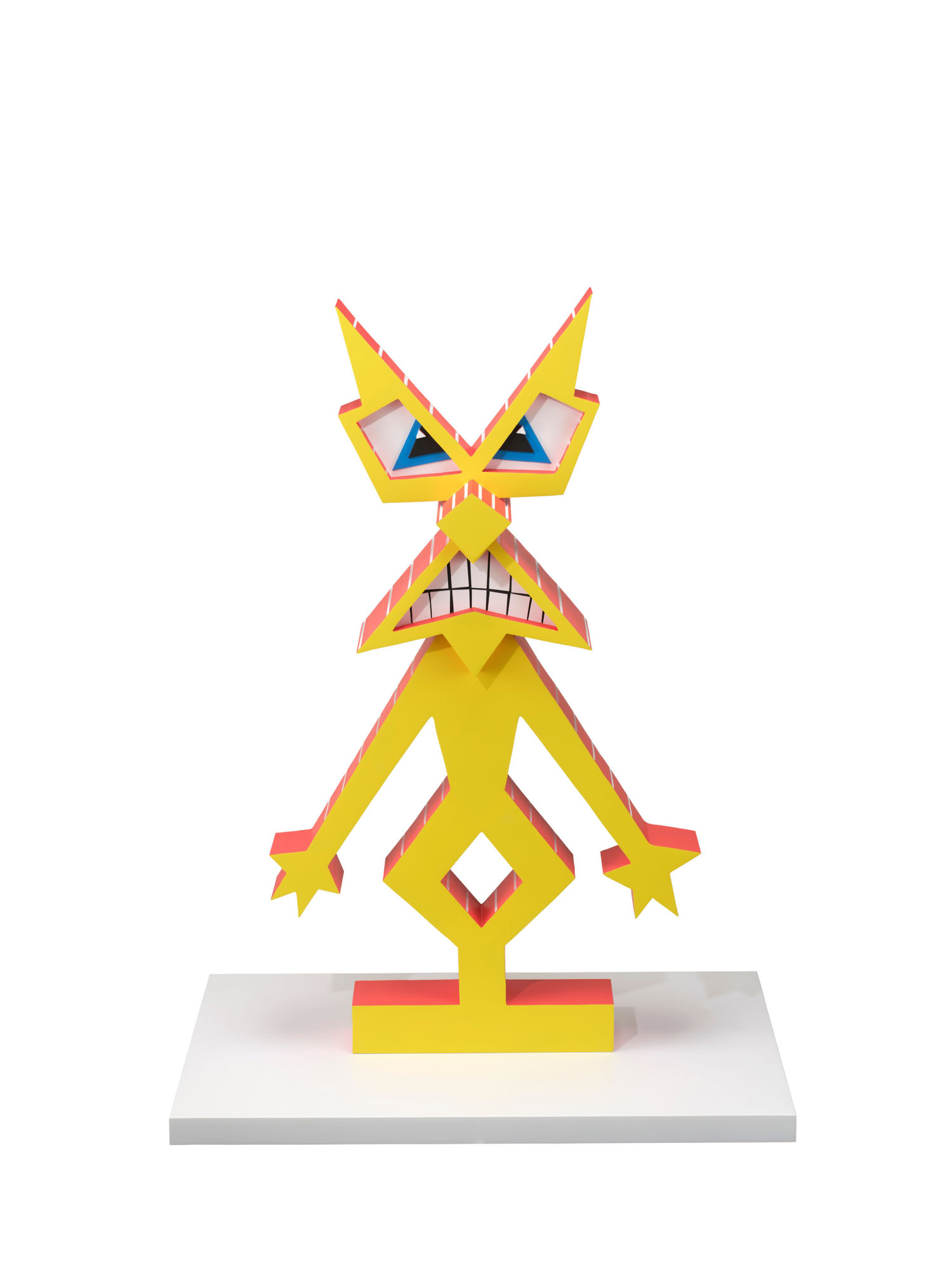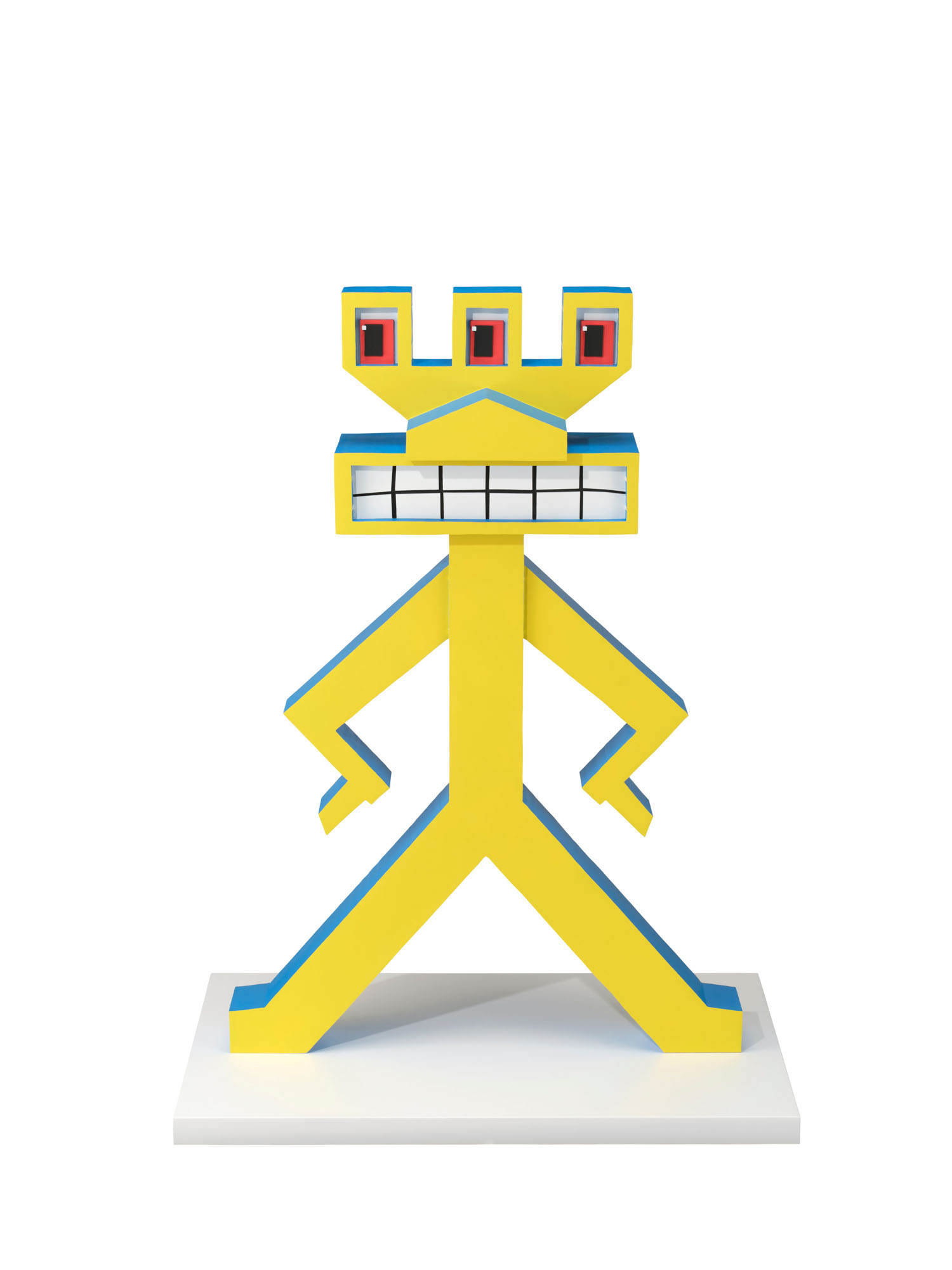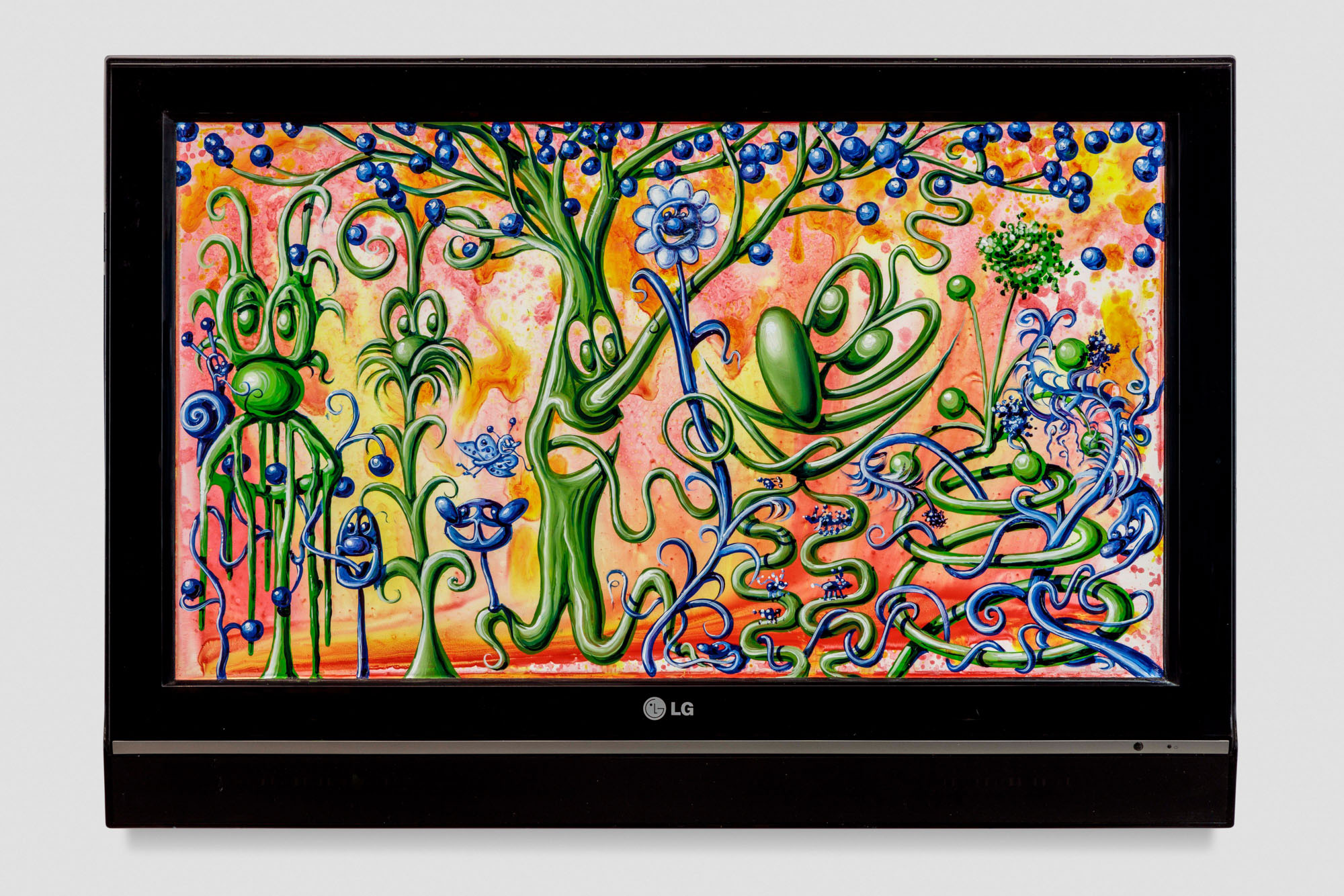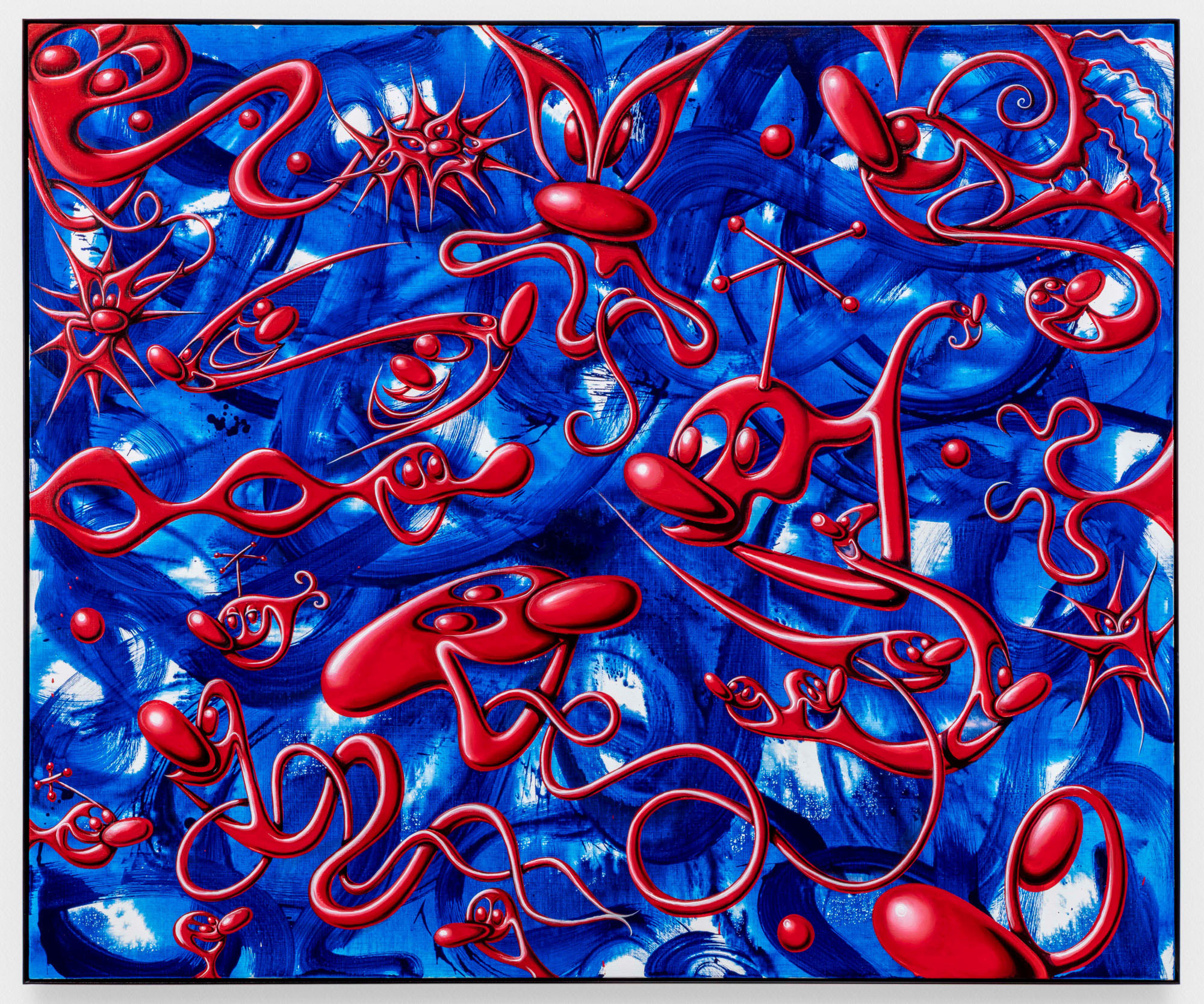I'm Baaack, Kenny Scharf 's first solo exhibition of new works in thirty years with his primary gallery in Japan opened last weekend across two venues at Nanzuka Underground (Jingumae, Shibuya) and Sogetsu Plaza, Sogetsu Kaikan (Akasaka, Minato). In addition to an installation of a series of new three-dimensional sculptures in Isamu Noguchi’s Stone Garden, the exhibition at Sogetsu Kaikan will present for the first time in 38 years Scharf’s "Yumeno Kuruma (Dream Car)," a Cadillac painted and modified by the artist himself in 1985 during the "Art in Action" exhibition hosted by Sogetsu Kaikan.
Kenny Scharf graduated from the School of Visual Arts in New York in 1980. Thereafter, with Andy Warhol as his mentor and as a member of the "East Village Art Movement" whose main style of expression centered on graffiti and collage, Scharf soon came into the spotlight together with fellow artists of his generation such as Jean-Michel Basquiat and Keith Haring. In 1985, Scharf participated in the Whitney Biennial. He coined the term “pop surrealist” to describe his unique artistic practice. His recent exhibitions include, “Moodz” (Jeffrey Deitch, 2020), “Super Pop Universe” (Lotte Museum of Art, Seoul, Korea, 2018), “Fast Forward _Painting from the 1980s” (Whitney Museum of American Art, New York, 2017), and “Hammer Projects” (Lobby Mural Hammer Museum Los Angeles, CA, 2017). Today he is respected by many young artists as a pioneer who paved the path to the context leading to the trend of 21st-century pop art grounded by artworks featuring signature characters.
Scharf’s works are above all characterized by their vibrant use of colors and distinct characters. Scharf, who proclaims himself a fan of “The Flintstones” and “The Jetsons,” had gained inspiration for his own characters while drawing reference to those featured in such animated sitcoms. The artist describes his characters which at once appear like alien creatures, giant microorganisms, and plant monsters, as metaphors for himself and his friends, representing natural emotions such as anger, joy, sleepiness and hunger. He also describes the various colors as representing all manners of emotion. The movement and sense of speed in Scharf’s work directly bears the most important context of life itself.
The new works that Scharf painted for this exhibition feature an array of richly expressive characters that appear to freely shape-shift while dynamically flying or moving around. In both good and bad ways, they remind us of the free-spirited nature of human beings. Upon closer observation, viewers notice that various words and phrases such as “global warming,” “unforeseeable outcome,” “accuser,” and “medical system development” written in Japanese, are dispersed throughout. For this solo exhibition in Japan, Scharf collected Japanese newspapers and embedded his works with keywords related to themes that we are currently confronted with. All kinds of social issues lie within the backdrop of Scharf’s artistic activities, as someone who had lost many friends to drugs and AIDS during his youth.
In 1985, Scharf presented "Cosmic Cavern," an installation using found objects such as worn-out toys and home appliances and black light. This work, which converts the entire space into vivid neon colors and provides an immersive viewing experience, continues to evolve as a series that is symbolic of Scharf’s art.

